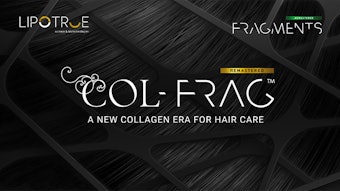Recent improvements in methods to isolate chitin nanofibrils from crustacean chitin suggest cutaneous applications in areas such as skin rehydration, wound healing and maintenance of cutaneous homeostasis.
Chitin (from the Greek χιτων for “protective coat”) represents the most important compound of the crustacean and insect cuticle, but it also occurs in the fungal cell wall.
Chemically, chitin is a polysaccharide formed by glucosamine and N-acetylglucosamine units having β-(1→4) bonds. These same bonds are found in cellulose. They also are found in the hyaluronic acid of human skin and in other mammalian organs.
Although cellulose is a neutral polysaccharide, chitin is weakly cationic and chitosan is strongly cationic because of the glucosamine effect. On the other hand, hyaluronic acid is an anionic polysaccharide made of d-glucuronic acid and N-acetyl glucosamine. The structural similarity among chitin, cellulose and hyaluronic acid suggests that plants, insects and mammals evolved from a single primordial bacterium.

![Lead Image2 [nas] 800x450px](https://img.cosmeticsandtoiletries.com/files/base/allured/all/image/2024/10/Lead_image2__NAS__800x450px.6704042d635b8.png?auto=format%2Ccompress&fit=crop&h=191&q=70&w=340)








